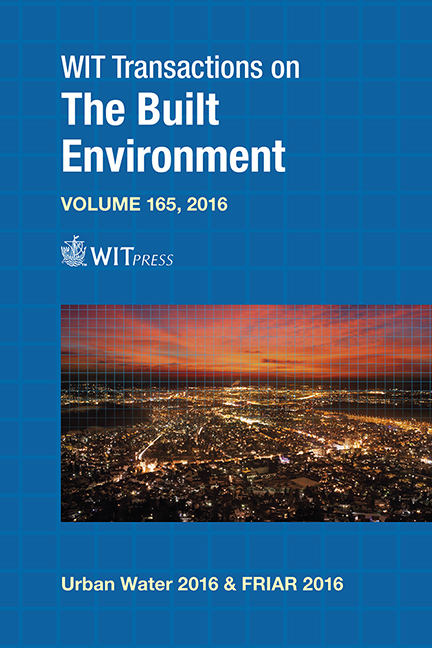Laboratory Study On The Rainfall Influence Over The Sediment Transport Dynamics On Pervious Pavements’ Discharge
Price
Free (open access)
Transaction
Volume
165
Pages
12
Page Range
165 - 176
Published
2016
Size
300 kb
Paper DOI
10.2495/UW160151
Copyright
WIT Press
Author(s)
M. Marchioni, V. C. Andrés-Valeri, F. Giustozzi, G. Becciu
Abstract
Infiltration capacity reduction due to the progressive clogging of land surfaces is the most important feature controlling pervious pavement life use. It is influenced by material and local characteristics. The rainfall regime can be influenced by water volume and rainfall intensity. A laboratory study was conducted to analyze the influence of the rainfall intensity on the sediments dynamics on pervious pavements. Three different rainfall intensities were settled using a rainfall simulator: 50 mm/h, 100 mm/h and 150 mm/h. Pervious concrete (PC) and porous asphalt (PA) slabs of 50 × 26 × 5 cm, with void contents of 15%, 20% and 25% were tested. They were clogged using sediments containing mostly sand and an assembled PSD (particle size distribution) that fall within the range of real case scenarios. The sediments were applied over the slabs on aerial loadings of 0.5 kg/m2, 1.0 kg/m2 and 2.0 kg/m2. Using a falling head permeameter discharge measurements were made over the samples in newly built conditions, after clogging and after rainfall simulation. The obtained results showed that in most cases the rainfall intensity does not produce significant differences in discharge time. The information obtained through this study provides better understanding of sediments transport mechanisms on pervious pavements and could lead to customized maintenance routines.
Keywords
pervious pavement, clogging, rainfall simulation, sustainable urban drainage





